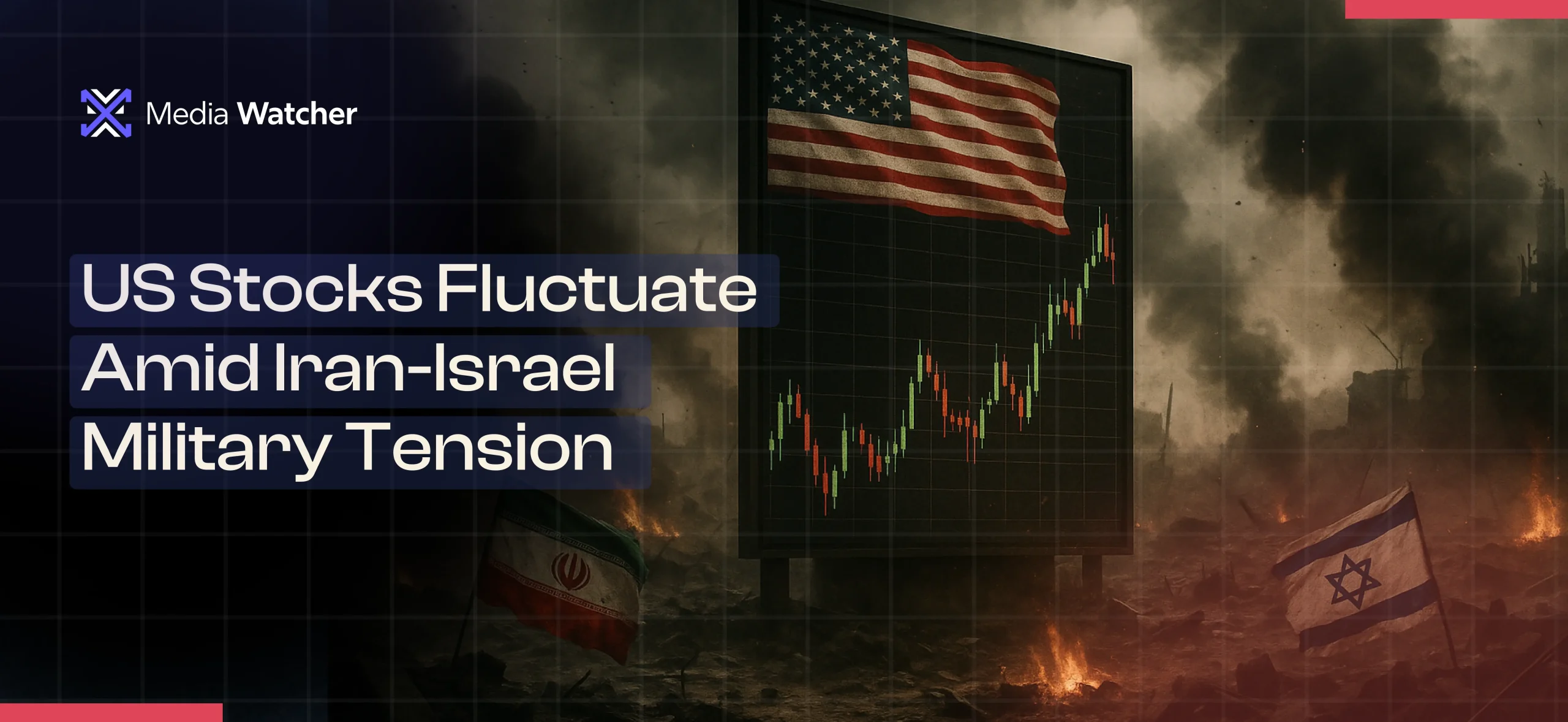As the geopolitical tensions continue to evolve between Iran and Israel, the US stock markets are showing fluctuations. On Tuesday, the 17th of June, Wall Street reported a modest dip in the US stocks, pulling back after a strong performance the day before. This shift reflects investors’ nervousness as they closely monitor the global events and the way the media is covering the events.
Monday’s market rally surprised many, with the Dow Jones Industrial Average rising over 180 points, the Nasdaq gaining 0.82%, and the S&P 500 Index moving up by 0.77%. However, by Tuesday morning, all three indices faced a sudden decline, signaling renewed investor caution. This fluctuating stock pattern highlights the market’s heightened sensitivity to geopolitical developments.
Geopolitical Risk Amplification Through Media Channels
While the geopolitical conflict remains the core concern, its impact on the stock market is being heavily mediated by how it is framed across the global news and social media platforms.
As reportedly said by Chief Equity Strategist Terry Sandven, “We’re in a period where visibility is not great, uncertainty is high, and the wall of worry is under construction.”
The renewed hostilities marked by political escalation and cross-border strikes are intensifying stock market uncertainty through both conventional news coverage and the rapid spread of narratives across digital platforms.
Investors Shift Toward Crisis-Resilient Sectors
During such conflicts, some sectors become profitable for capital. Energy stocks continue to benefit from higher oil prices, while the defense contractors are gaining traction amid expectations of heightened geopolitical spending.
In light of such concerns, investors are awaiting further updates on the situation, especially as global leaders attempt to de-escalate the crisis. This calls for the integration of tools that are capable of tracking sentiment shifts, identifying disinformation risks, and interpreting the momentum of emerging narratives.
Requirement of Real-Time Monitoring for Real-Time Stock Risks
The current US market situation is so volatile, as traders are not just responding to government data but also to real-time digital signals. From spikes in keyword usage to overall audience sentiment shifts across financial forums, the need for dynamic media monitoring tools cannot be overstated.
As the Iran-Israel conflict continues to develop, stock markets are expected to remain reactive to headlines and media tone. With Media Watcher, the investors’ sentiments and stock shifts can be seamlessly identified in real-time, allowing the companies to make informed decisions.

